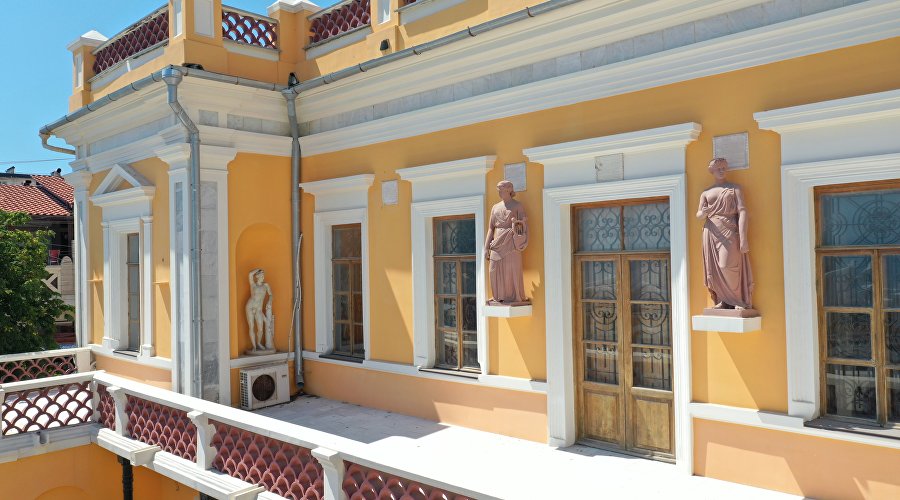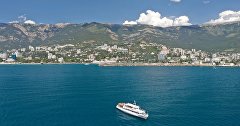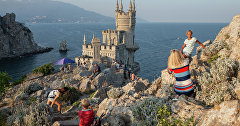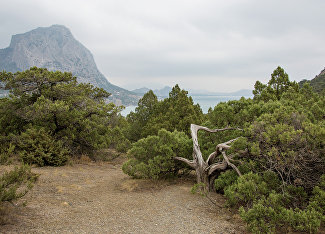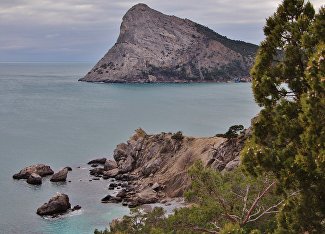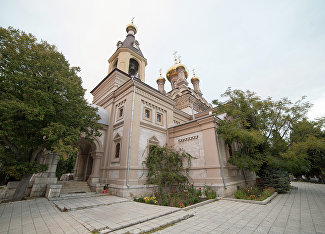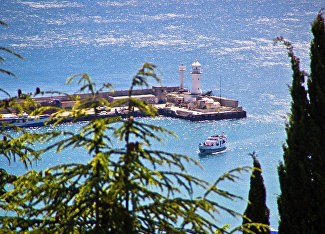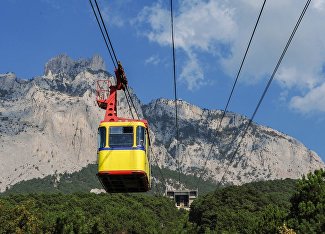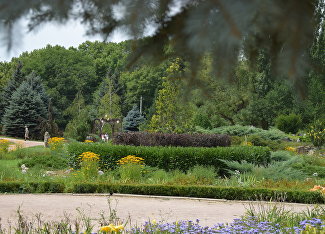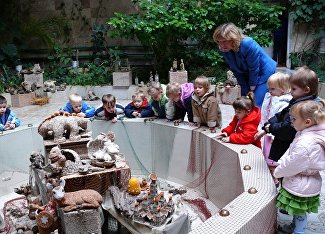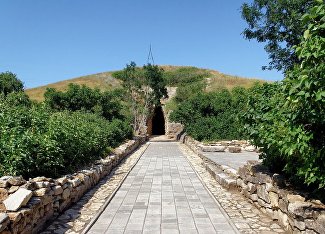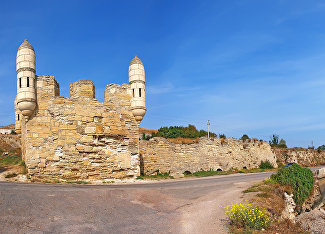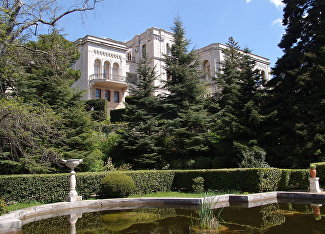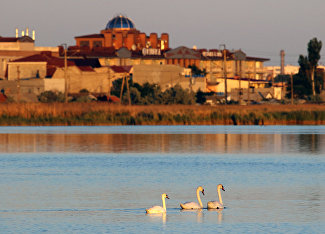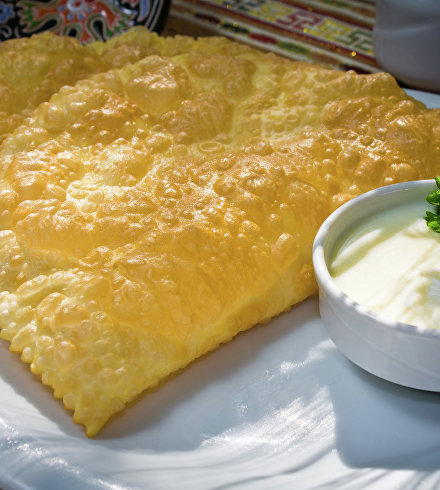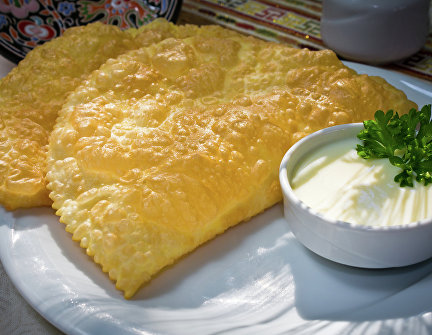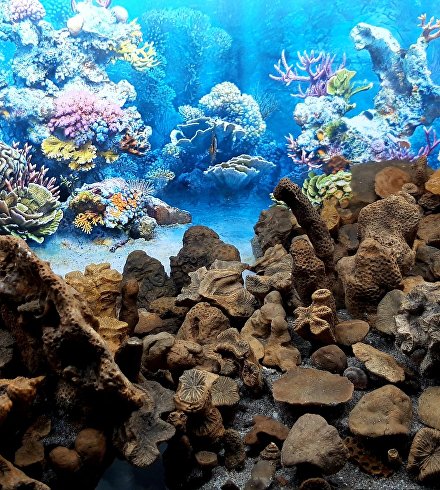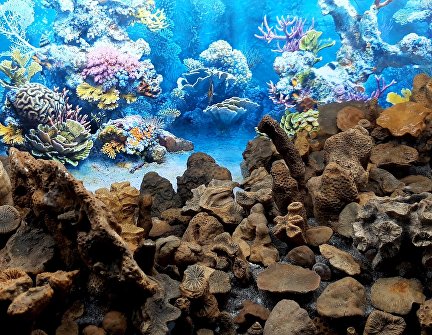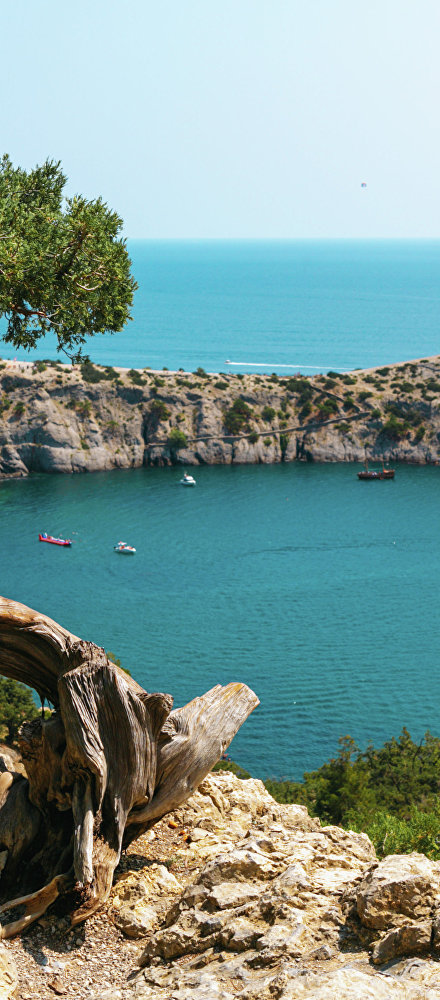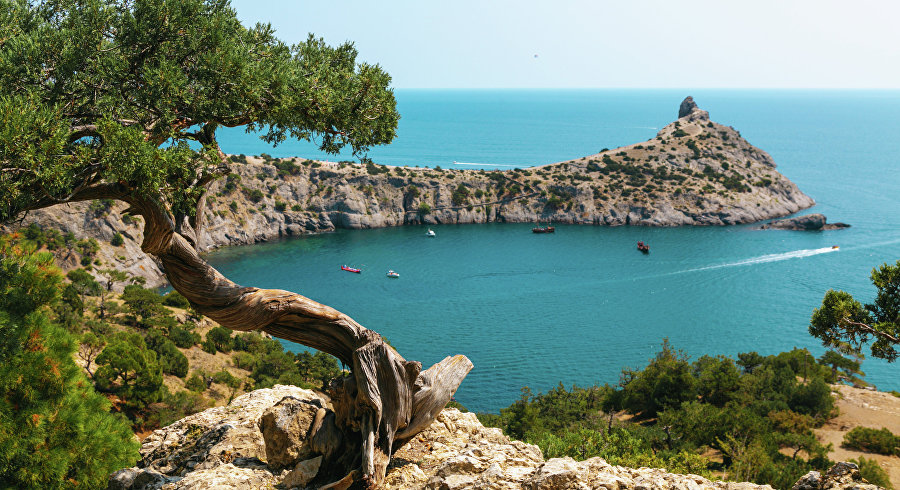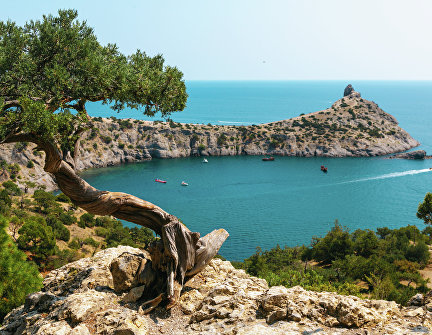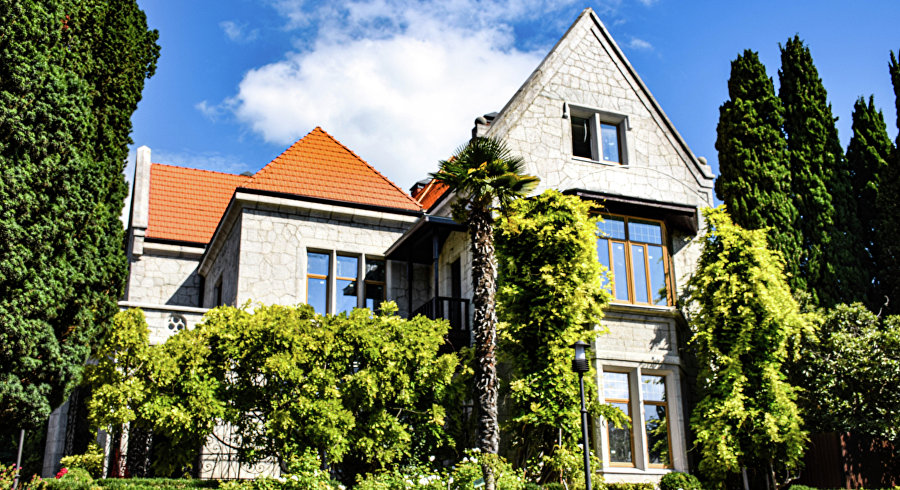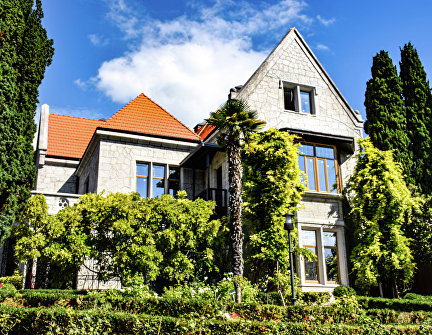"These sculptures survived the Russian-Turkish war, the Civil War, and the Great Patriotic War (when the landing force landed right in the middle of the city of Theodosia) and so on. The sculptures have survived all this. True, they were in a sorrowful condition," Tatiana Gaiduk said. "And now, after restoration, these sculptures have become stunning. Everything has been reproduced and everything has been restored: the faces of these muses (and they are all different and all amazing), and each holds the mask of the art the muse represents, and those amazing masks with a huge amount of details, they are very well worked out."
"We have one gryphon of those that existed in the lifetime of the maestro. A mold for making new gryphons will be made using the original and new ceramics ones will be molded. They will be white. The gryphons that have been installed in the gallery in recent years were new statues. The fact is that one of the gryphons was smashed to pieces by a storm wind more than ten years ago. Two gryphons were replaced, one of the remaining ones was left in the store," Tatiana Gaiduk said.
"The building is at the corner of Gallery Street and Aivazovsky Avenue. And the Gallery Street runs along the riverbed that existed in the 17th-19th centuries. Eventually this river was covered with a pavement and a street appeared. But the river did not disappear, it went underground. And the walls of Aivazovsky's house, which were built of sandstone, suck water from the underground river. This is on the one hand. On the other hand, the house stands literally on the seashore. In addition, the north side of the house stands on quicksand. During the restauration project development and budgeting, great attention was paid to solving this problem. There are several types of wall drainage work: vertical, horizontal and cutoff drainage. Among other things, an electrolytic dehumidification system is used in our building. The same system is used in the Hermitage. After the completion of the work, the problem of wet walls will disappear," Tatiana Gaiduk explained.
The restoration of the Aivazovsky Gallery started at the beginning of this year. It was closed to visitors since March 16, and it is planned to complete the works and open the gallery by the end of August 2022.
The Aivazovsky Art Gallery in Theodosia is one of the oldest, most popular museums in the country and the first public art gallery in the South of Russia. By the will of the artist, after his death in 1900 the gallery was donated to his hometown. Since 1922, it has become a national museum. Its collection includes paintings, graphics and archival documents, memorial items and items of decorative and applied arts. In total, there are more than 13 thousand exhibits, including the world's largest collection of works by Aivazovsky.
